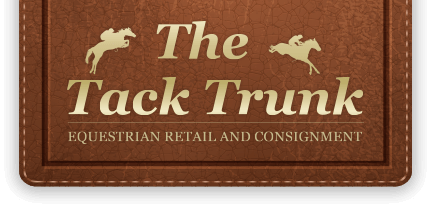Did you know that some of the first saddle soap to be sold in the United States was made by Fiebings, a leather goods company in the 1890s. Fiebings is still in business today but saddle soap and leather care has definitely come a long way since then. As riding has evolved, so has the tack and equipment we use and so should our way of caring for and cleaning leather.
Some of the basic principles still apply to general leather care. A mild glycerin soap is still recommended for cleaning most saddles and bridles.
Glycerin is an astringent, meaning it shrinks porous materials (think cow hides!). During this process, grim and dirt are pulled to the surface and it is through the light scrubbing action we do with our tack sponge that lifts and removes the dirt from the surface of the leather. In humid climates, most often, tack can be maintained by wiping off surface dust and dirt with a damp cloth and then followed up with glycerin soap to keep the leather supple.
Neatsfoot oil should NEVER be used as a conditioning product or for frequent use. It can leave an oily residue that can attract dust and can even break down stitching and glues used on bridles and saddles. Over-oiling leather can lead to over-stretching and over-softening, which can be as dangerous as dry, brittle tack. Neatsfoot oil is best used very sparingly to help soften a new piece of leather and we recommend always following a manufacturer’s suggestions for leather care and treatment!
Leather balsams and conditioning products can help restore PH levels in overly dry leather and can be used in moderation to prevent cracking. Like with oil, we recommend using conditioners lightly! These can be helpful at restoring old, dry leather but tack will always stay in the best condition with regular use and maintenance!
Care for Dressage saddles, bridles and black leather can be quite different from brown, traditionally tanned leather used for hunter/jumper type saddles and bridles. Due to the fact that the leather is often dyed black, it should be cleaned and conditioned using different products. To break in and soften new leather, an avocado or lanolin oil should be used. For general cleaning, a glycerin soap can be used but care must be taken that it contains no harsh cleaning agents, which can bleach out the black leather. For general conditioning, a product containing lanolin, avocado oil or beeswax can help preserve the leather. We love the Effol products such as Effax Creme Soap, Lederbalsam and Leder Combi!
Remember, dust and sweat are what causes the most damage to leather! Dust is very abrasive and when left on leather over time it can cause scratches and eventually cause hold holes and rubs in leather. Sweat causes leather to dry out! It is the number one reason for cracking on the underside of the saddles on the sweat flaps and panels! Even if you don’t have time to clean your tack after a sweaty ride, wiping down the underside of your saddle can help prevent cracks and prolong the life of your saddle.
Cleaning your tack is an excellent time to check over the general condition of your leather and helps you keep an eye on anything that might be a problem down the road. Loose stitching, tears in the leather or excessive wear can all be seen during regular tack cleaning and can even be more evident with tack is taken apart and cleaning in pieces!
Please ask us about our favorite tack cleaning products and for any further tips when you are in the store next!
